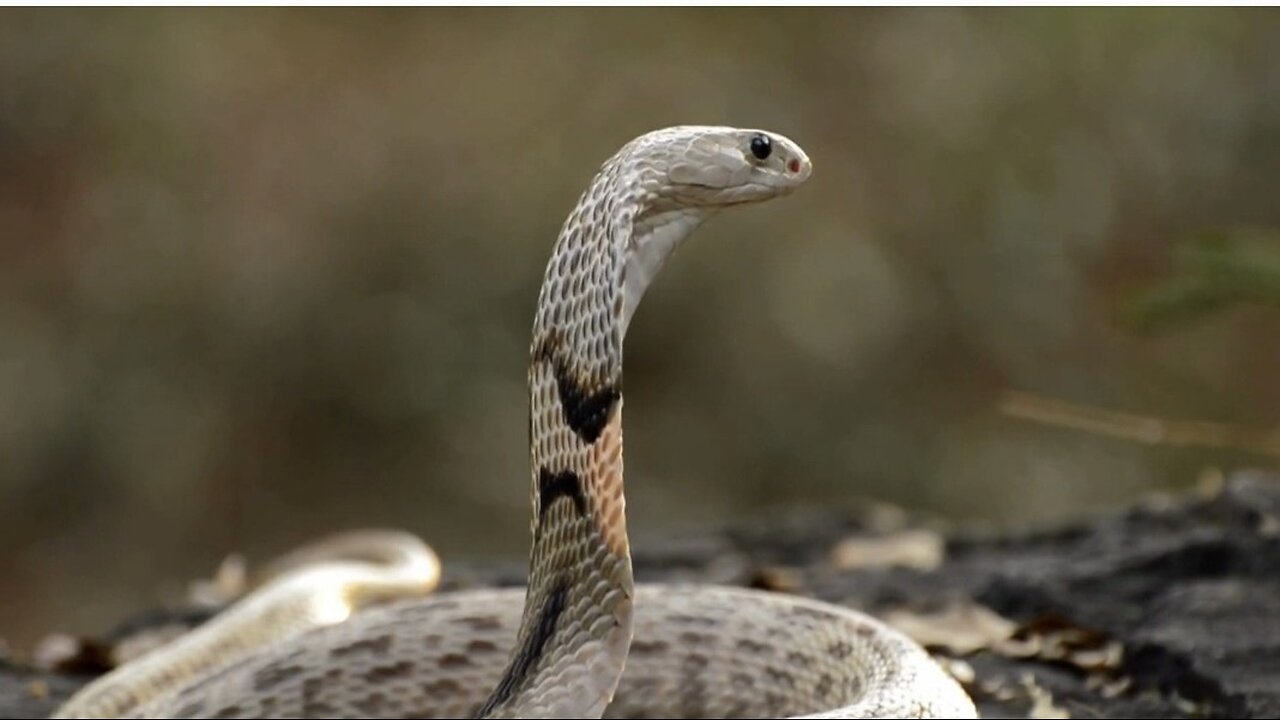Premium Only Content

"Snakes Unveiled: Masters of Stealth and Survival"
Snakes are fascinating creatures that belong to the suborder Serpentes and are found across the world, except in Antarctica. They are elongated, limbless reptiles covered in scales, with over 3,000 species ranging from small, non-venomous varieties to large, highly venomous ones. Their size can vary greatly, with some, like the tiny thread snake, measuring around 10 cm (4 inches), while others, like the reticulated python, can reach over 9 meters (30 feet) in length.
Key Features of Snakes:
1. Limbless Body: Snakes have evolved to lose their limbs over millions of years. This streamlined body allows them to slither and navigate through narrow spaces, climb trees, swim, and burrow.
2. Skull and Jaws: Their flexible skull and jaw bones allow them to consume prey much larger than their head. This is achieved through a unique jaw structure where the lower jaw is only loosely connected, allowing it to stretch wide.
3. Senses:
Vision: Many snakes have poor eyesight, but species like tree-dwelling snakes have excellent vision.
Smell: They rely heavily on their sense of smell, which they enhance by flicking their forked tongue to collect scent particles and transferring them to the Jacobson’s organ (located in the roof of their mouth).
Heat Detection: Some species, particularly pit vipers, boas, and pythons, have specialized pits that sense infrared radiation (heat) from warm-blooded prey, even in darkness.
4. Movement: Snakes move in a variety of ways depending on the terrain, including serpentine (slithering), rectilinear (in a straight line), sidewinding (used by desert species), and concertina (useful in confined spaces).
5. Venom: About 600 species of snakes are venomous. These species use venom, delivered through specialized fangs, to immobilize and digest prey. Common venomous snakes include cobras, vipers, and rattlesnakes. Not all snakes are dangerous to humans, and the majority of snake species are non-venomous.
6. Feeding: Snakes are carnivorous, preying on animals like rodents, birds, amphibians, and other reptiles. Some species, such as pythons and boas, constrict their prey to subdue them, while others use venom.
7. Reproduction: Snakes reproduce through laying eggs (oviparous) or live birth (ovoviviparous). Depending on the species, the female may lay her eggs in a secluded spot or retain the eggs inside her body until they hatch.
8. Habitat: Snakes are incredibly adaptable and live in a wide range of environments, from deserts and forests to wetlands and urban areas. They can be found on every continent except Antarctica, thriving in both tropical and temperate climates.
Role in the Ecosystem:
Snakes play an important role in controlling the population of pests like rodents and insects. They are both predator and prey in various ecosystems, contributing to a balanced food web. Many animals, including birds of prey, mongoose, and even other snakes, feed on them.
Myths and Symbolism:
Throughout history, snakes have been subjects of mythology, representing both danger and healing. In many cultures, they are symbols of fertility, immortality, and rebirth due to their ability to shed their skin. Conversely, they are often feared due to their venomous nature and stealthy behavior.
Despite their often negative reputation, snakes are vital to ecosystems and exhibit remarkable adaptations that make them both mysterious and intriguing creatures of the wild.
-
 DVR
DVR
In The Litter Box w/ Jewels & Catturd
1 day agoGov. Trudeau Agrees to Terms | In the Litter Box w/ Jewels & Catturd – Ep. 734 – 2/4/2025
38.1K20 -
 1:21:03
1:21:03
Russell Brand
3 hours agoBREAK BREAD EP. 13 - WESLEY HUFF
88.7K6 -
 LIVE
LIVE
Game On!
52 minutes agoRoger Goodell is FURIOUS at NFL fans who think Mahomes gets special treatment!
85 watching -
 10:31
10:31
Melonie Mac
2 hours agoMy Fantastic Four Movie Trailer Impressions
5303 -
 2:08:22
2:08:22
The Quartering
5 hours ago20,000 Feds QUIT, DOGE Workers Lives At Risk, Trump Vs Dept Of Education, Brie Larson Based & More
80.8K55 -
 1:23:15
1:23:15
vivafrei
18 hours agoLive with Enrique Tarrio! Jan. 6 Lawfare ON STEROIDS! Proud Boys & Beyond!
83.5K33 -
 DVR
DVR
Savanah Hernandez
2 hours agoEl Salvador offers to take in U.S. prisoners while Elon’s autists take on the deep state
6.64K4 -
 7:12
7:12
Tactical Advisor
5 hours agoBudget 2011 That Uses Glock Mags?! | Fusion Firearms 2025
9.89K -
 58:19
58:19
Ben Shapiro
5 hours agoEp. 2131 - Trump and Musk Bring The CHAINSAW
84K50 -
 1:12:31
1:12:31
Russell Brand
6 hours agoTrump’s Trade Wars: Power Plays and Global Repercussions – SF531
103K37